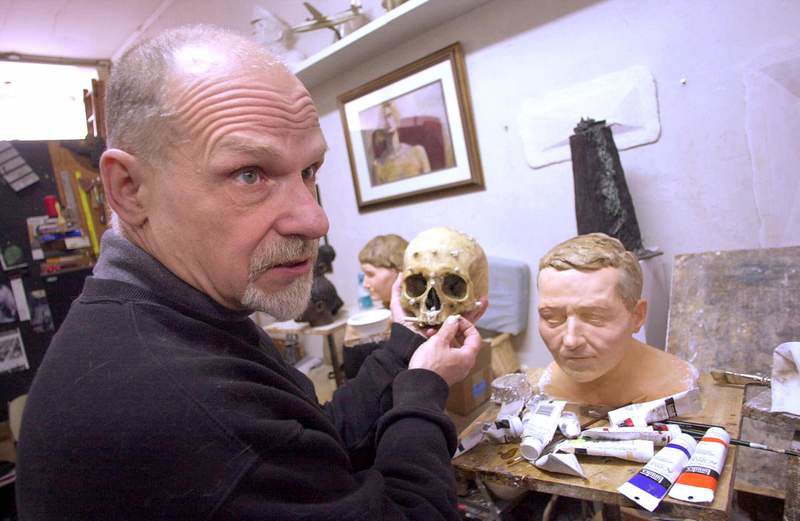Forensic sculptor’s work led to several arrests
Published 5:00 am Sunday, July 31, 2011

- Forensic artist Frank Bender explains how he makes his forensic models at his studio on South Street in Philadelphia, in March, 2001. Bender, whose work led to several victim identifications and arrests, died Thursday. He was 70.
Frank Bender, a forensic sculptor whose work — haunting, three-dimensional faces in clay — helped identify the forgotten dead and apprehend the fugitive living, died Thursday at his home in Philadelphia. He was 70.
The cause was pleural mesothelioma, a rare cancer that attacks the outer lining of the lungs, his daughter Vanessa said.
Trending
Bender was among the best known of the country’s handful of forensic sculptors — an unusual craft that stands at the nexus of art, crime, science and intuition.
Bender was almost entirely self-taught, for he never anticipated a career in forensic sculpture. A former professional photographer, Bender found his calling by chance in the late 1970s, on a trip to the Philadelphia morgue. After that he was consulted by police departments across the country and abroad, and by the FBI.
Of the 40 or so heads he sculptured over the years, most were designed to identify murder victims for whom DNA, dental records and fingerprints had come up empty.
In these cases, Bender endeavored to turn back time, using victims’ skulls to render their faces as they might have looked in life. A “recomposer of the decomposed” is what he called himself — quite cheerily — on his answering machine.
For fugitives, Bender coaxed time forward, using photographs and other information to sculpture malefactors as they might look 10 or 20 years on. It was in one such case that he scored his most spectacular success: a role in capturing one of the most notorious murderers in America.
A conjurer in clay, Bender was, he often said, as much psychologist as sculptor, divining — or so it seemed — features that skulls alone could not tell him: hair color, characteristic expressions or precise skin color, which he painted onto the finished sculpture.
Trending
It was not the money that spurred Bender: he charged about $1,700 for a sculptured head, and typically made only a few a year. Between assignments, he worked as a fine-art painter and sculptor and held various jobs, including working on a tugboat.
Constitutional pugnacity
What drove him, those who knew him say, was a constitutional pugnacity.
“He’s a fighter for justice,” Ted Botha, the author of a book about Bender, said in an interview shortly before Bender’s death. “He’s almost like a little Captain America or something.”
It is impossible to gauge precisely Bender’s career success rate, where “success” means identifying a victim or catching a fugitive. Bender — who, as associates attest, was a larger-than-life character with no small awareness of his own news value — sometimes put the figure at 85 percent.
The correct figure, his associates say, is probably closer to 40 percent. “Not even he knows, because nobody actually tells him,” Botha said. “The police departments don’t always come back to him afterwards; that’s one of the kind of bittersweet things about what he does.”
His greatest triumph came in 1989, in the case of John Emil List. In 1971, List, a seemingly mild-mannered accountant, murdered his mother, wife and three children in their Westfield, N.J., home. Then he vanished.
Eighteen years later, the television show “America’s Most Wanted” commissioned a bust from Bender for a segment on List. Working from an old photograph, he created a balding, jowly figure.
In a stroke of inspiration — or perhaps luck — Bender added glasses with thick black rims, the kind he felt a strait-laced man like List would wear.
On May 21, 1989, a woman in Virginia watching the broadcast thought she recognized her neighbor, a balding, jowly accountant with thick black glasses named Robert Clark. On June 1, Clark was arrested. Fingerprints confirmed his identity as John List. Convicted and sentenced to five life terms, he died in 2008.







